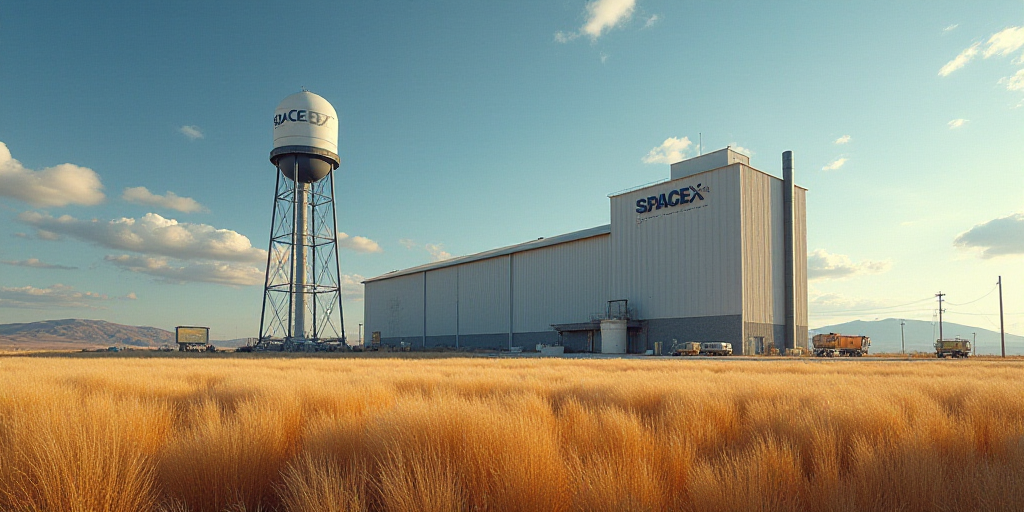Background on SpaceX and Elon Musk
SpaceX, the brainchild of tech entrepreneur Elon Musk, is set to launch its Starship rocket for the tenth time from Texas on Sunday. This test flight aims to achieve significant development milestones that have eluded the company due to previous testing failures.
Starship Development Challenges
The development of SpaceX’s next-generation rocket, central to the company’s future launch business and Musk’s ambitions for Martian colonization, has faced numerous setbacks this year. The National Aeronautics and Space Administration (NASA) plans to use the Starship for its first crewed lunar mission as early as 2027, further emphasizing the importance of this project.
Moreover, SpaceX’s lucrative Starlink satellite internet business, primarily deployed via the Falcon 9 rocket, is also tied to Starship’s success. Musk intends to leverage Starship’s greater thrust and heat shield capabilities to deploy larger Starlink satellites, expanding the constellation’s bandwidth.
Recent Test Flight Setbacks
This year, SpaceX has encountered several hurdles in Starship test flights. Early-flight failures, a space mishap during the ninth flight, and a massive explosion at the test stand in June that sent debris flying across Mexico have tested SpaceX’s development approach.
Despite these challenges, SpaceX has continued rapidly producing new rockets for test flights at its sprawling Starbase facilities.
Technical Complexity and Reusability
The setbacks highlight the technical complexities of Starship, which boasts advanced features such as increased thrust, a potentially more robust heat shield, and stronger motor steering fins—critical for successful reentry and reuse.
Musk has long sought rapid, cost-effective reusability for Starship, a key factor in reducing launch costs and enabling ambitious space exploration goals.
Upcoming Test Flight Details
The upcoming test flight is scheduled to lift off from Texas, with the Starship’s upper stage separating from the Super Heavy booster at tens of kilometers in altitude.
Super Heavy is designed to land in the Gulf of Mexico, testing a backup engine configuration.
Meanwhile, the Starship will briefly ignite its own engines to venture into space, attempting to deploy a batch of simulated Starlink satellites and then reignite for a suborbital trajectory around Earth.
Reentry Testing
Approximately an hour into the mission, the spacecraft will embark on a reentry through the Indian Ocean—a critical flight phase that will test various prototype heat shield and motor fin designs capable of withstanding intense heat during reentry, which has historically damaged the rocket’s exterior in previous tests.
“The Starship reentry profile is designed to intentionally stress the structural limits of the upper stage’s rear fins at the point of maximum dynamic pressure during entry,” SpaceX explained on its website.
Key Questions and Answers
- Who is SpaceX and Elon Musk? SpaceX is an aerospace manufacturer and space transportation services company founded by Elon Musk in 2002. Its mission is to reduce space transportation costs and enable the colonization of Mars.
- What is Starship? Starship is SpaceX’s next-generation fully reusable spacecraft, designed to carry both crew and cargo to Earth orbit, the Moon, Mars, and beyond.
- Why is this test flight significant? This tenth test flight aims to achieve crucial reusability milestones, demonstrating Starship’s ability to withstand the rigors of launch, space travel, and reentry.
- What is the connection between Starship and Starlink? Starlink is SpaceX’s satellite internet constellation. Successful Starship development could lead to deploying larger, more capable Starlink satellites, expanding internet coverage and bandwidth.
- What are the challenges faced by SpaceX in Starship development? SpaceX has encountered numerous technical and logistical challenges, including early-flight failures, space mishaps, and explosions during testing. These setbacks emphasize the complexity of achieving rapid, cost-effective reusability for Starship.






